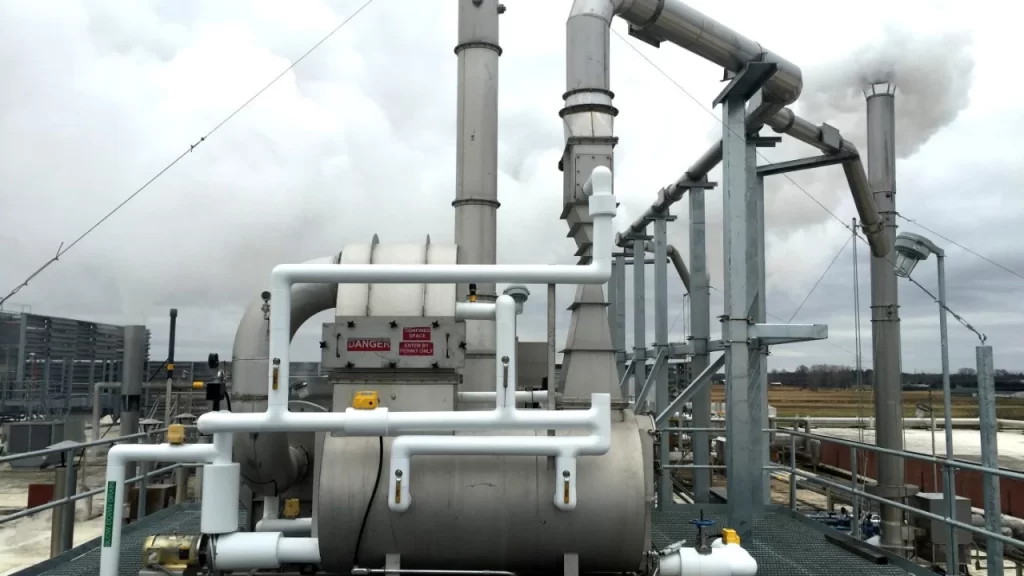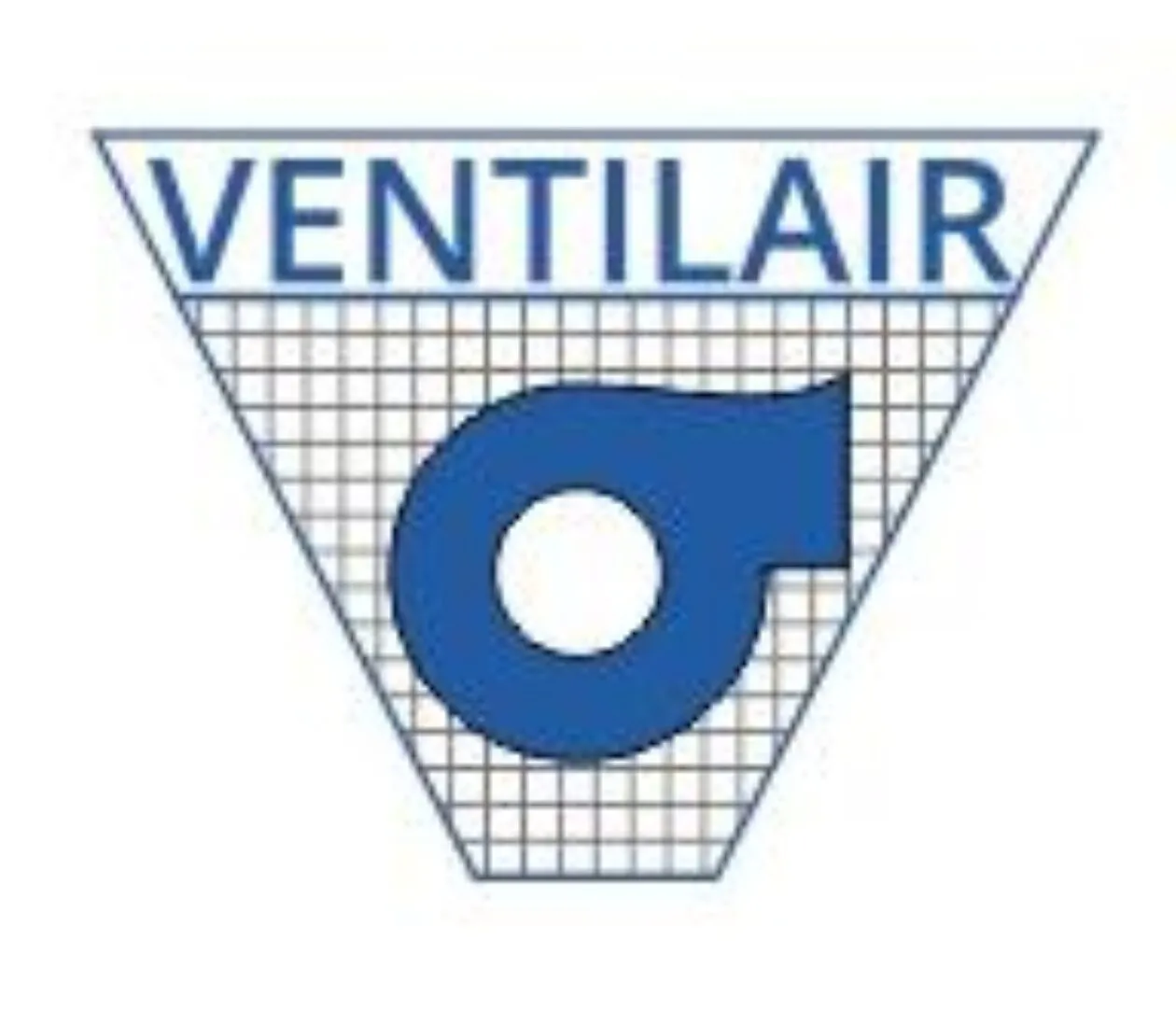A wet scrubber is a highly efficient air pollution control device used to remove particulate matter, gases, and chemical pollutants from industrial exhaust streams. It operates by using a liquid—usually water or a chemical solution—to capture and neutralize contaminants, making it a widely used technology in industries like power plants, chemical processing, steel manufacturing, and pharmaceuticals.
Industrial air pollution is a major concern for industries dealing with toxic gases, particulate matter, and other pollutants. One of the most effective air pollution control devices is the wet scrubber, which is widely used in industries such as power plants, chemical manufacturing, and metal processing. The working principle of a wet scrubber involves using liquid (typically water or a chemical solution) to remove pollutants from exhaust gases before they are released into the atmosphere.

Scrubber Working Principle
Scrubbers operate based on mass transfer, where the scrubbing liquid absorbs or neutralizes contaminants in the gas stream. This process includes several crucial steps to ensure the effective removal of pollutants.
Key Steps in Scrubber Operation:
- Introduce Gas Stream: The scrubber receives the contaminated gas stream from the bottom or side.
- Interact with Scrubbing Liquid: The gas stream contacts the scrubbing liquid, which sprays or introduces into the scrubber.
- Mass Transfer: The scrubbing liquid absorbs or neutralizes contaminants in the gas stream.
- Exit Clean Gas: The scrubber releases the cleaned gas from the top.
- Collect Pollutants: The scrubbing liquid, now containing contaminants, collects in a chamber for treatment or recycling.
Wet Scrubber Working Principle
Wet scrubbers use a liquid, typically water, to capture and neutralize pollutants. They spray the liquid into the contaminated gas stream, absorbing the pollutants. Wet scrubbers effectively remove gases, particulate matter, and soluble substances.
Key Steps in Wet Scrubber Operation:
- Introduce Gas Stream: The gas stream enters the wet scrubber through a tangential or axial inlet.
- Spray Liquid: Nozzles spray the scrubbing liquid into the gas stream, creating a fine mist.
- Absorb Pollutants: The liquid droplets capture and absorb pollutants from the gas stream.
- Collect Droplets: The droplets, now containing the pollutants, coalesce and fall into a collection chamber.
- Exit Clean Gas: The scrubber releases the cleaned gas from the top.
Dry Scrubber Working Principle
A dry scrubber is an air pollution control device that removes harmful gases and particulate matter from industrial exhaust streams without using liquid. Instead, it relies on a dry sorbent, such as lime, activated carbon, or sodium bicarbonate, to neutralize pollutants. The process involves injecting the sorbent into the gas stream, where it reacts with acidic or toxic gases like sulfur dioxide (SO₂) and hydrogen chloride (HCl). The resulting byproducts, including fine particulates, are then captured using a bag filter or electrostatic precipitator before releasing clean air into the atmosphere.
Key Features of Dry Scrubbers
- No Water Usage: Ideal for industries with water scarcity.
- Efficient Pollutant Removal: Effectively captures acidic gases, VOCs, and heavy metals.
- Low Maintenance: No liquid waste handling, reducing operational complexity.
- Compact Design: Requires less space compared to wet scrubbers.
- Energy Efficient: Lower energy consumption than wet scrubbers.
Gas Scrubber Working Principle
A gas scrubber is an air pollution control device designed to remove gaseous pollutants and particulate matter from industrial emissions. It operates by bringing the contaminated gas into contact with a scrubbing medium, which can be a liquid (wet scrubber) or a dry sorbent (dry scrubber). In wet gas scrubbers, pollutants dissolve or react with the scrubbing liquid, often water or a chemical solution, before being filtered out. In dry gas scrubbers, a solid absorbent neutralizes harmful gases, which are then captured through filtration. This process effectively removes toxic gases like sulfur dioxide (SO₂), ammonia (NH₃), and volatile organic compounds (VOCs), ensuring cleaner air emissions.
Key Features of Gas Scrubbers
- High Efficiency: Effectively removes harmful gases and particulates.
- Versatile Applications: Used in industries like chemical processing, power plants, and refineries.
- Customizable Design: Available in wet and dry configurations.
- Corrosion-Resistant Materials: Ensures durability in harsh environments.
- Regulatory Compliance: Helps industries meet environmental emission standards.
Scrubber System Working Principle
A scrubber system integrates various components to ensure efficient pollutant removal. This system includes the scrubber, pumps, fans, and control units to manage the scrubbing process.
Key Components of a Scrubber System:
- Scrubber Unit: The main component where the gas stream interacts with the scrubbing medium.
- Pumps: Circulate the scrubbing liquid or sorbent material through the system.
- Fans: Ensure the proper flow of the gas stream through the scrubber.
- Control Units: Monitor and regulate the scrubbing process, ensuring optimal performance.
Principle of Venturi Scrubber
Venturi scrubbers use a venturi throat to accelerate the gas stream, increasing the interaction between the gas and the scrubbing liquid. This acceleration enhances scrubbing efficiency by creating a high-velocity gas stream that improves mass transfer.
Key Steps in Venturi Scrubber Operation:
- Introduce Gas Stream: The gas stream enters the venturi scrubber through an inlet.
- Accelerate in Venturi Throat: The gas stream passes through the venturi throat, where it accelerates.
- Inject Liquid: The system injects the scrubbing liquid at the venturi throat, creating a high-velocity mist.
- Capture Pollutants: The liquid droplets capture pollutants from the gas stream.
- Collect Droplets: The system collects the droplets, now containing the pollutants, in a separator.
- • Exit Clean Gas: The scrubber releases the cleaned gas from the top.
Water Scrubber Working Principle
A water scrubber is an air pollution control device that uses water as a scrubbing medium to remove pollutants from industrial gas emissions. The process involves passing the contaminated gas through a chamber where it comes into direct contact with water. Pollutants, such as dust, acidic gases, and volatile organic compounds (VOCs), dissolve or get trapped in water droplets. The treated gas then moves through mist eliminators to remove excess moisture before being released as clean air. The contaminated water is collected and treated separately to prevent environmental hazards.
Key Features of Water Scrubbers
- Effective Gas and Particulate Removal
- Eco-Friendly & Water-Based Operation
- Suitable for High-Temperature Gas Streams
- Corrosion-Resistant Materials for Durability
- Customizable for Various Industrial Applications
Venturi Scrubber Working Principle
A Venturi scrubber is a high-efficiency air pollution control device that removes fine particulate matter and gases from industrial exhaust streams. It works by forcing the contaminated gas through a narrow throat section, where a scrubbing liquid (usually water) is injected. The high-velocity gas creates turbulence, breaking the liquid into tiny droplets that capture and absorb pollutants. The polluted droplets are then separated in a cyclone or mist eliminator, and clean air is released.
Key Features of Venturi Scrubbers
- High Efficiency – Effectively removes fine dust, fumes, and gases.
- Compact Design – Requires minimal space for installation.
- Handles High-Temperature Gases – Suitable for hot and corrosive environments.
- Self-Cleaning Mechanism – Reduces maintenance needs.
- Ideal for Industrial Use – Used in power plants, chemical processing, and metal industries.
Working Principle of Wet Scrubber
Wet scrubbers use water or other liquids to capture and neutralize pollutants. They effectively remove gases, particulate matter, and soluble substances from the gas stream.
Key Steps in Wet Scrubber Operation:
- Introduce Gas Stream: The gas stream enters the wet scrubber through a tangential or axial inlet.
- Spray Liquid: Nozzles spray the scrubbing liquid into the gas stream, creating a fine mist.
- Absorb Pollutants: The liquid droplets capture and absorb pollutants from the gas stream.
- Collect Droplets: The droplets, now containing the pollutants, coalesce and fall into a collection chamber.
- Exit Clean Gas: The scrubber releases the cleaned gas from the top.
Why Choose Ventilair India Pvt. Ltd. for Scrubbers?
Ventilair India Pvt. Ltd. is a trusted name in air pollution control solutions, offering high-quality wet scrubbers, dry scrubbers, gas scrubbers, and Venturi scrubbers tailored to industrial needs. With advanced technology, durable materials, and efficient designs, our scrubbers ensure maximum pollutant removal while meeting environmental regulations. We provide customized solutions, expert consultation, and reliable after-sales support, making us the preferred choice for industries seeking effective and long-lasting air purification systems.
Conclusion:
Scrubbers play a crucial role in controlling industrial air pollution by effectively removing harmful gases and particulate matter. Whether it’s wet scrubbers, dry scrubbers, gas scrubbers, or Venturi scrubbers, each type is designed to meet specific industrial requirements. Choosing the right scrubber ensures compliance with environmental regulations, enhances workplace safety, and promotes sustainability. Ventilair India Pvt. Ltd. offers high-performance scrubbers with advanced technology, durable construction, and expert support, making us the ideal partner for air pollution control solutions.
Website: https://www.ventilair.in/
Mobile: +919971026641
Email: sales@ventilairfans.com
